Domain 1: General Security Concepts
1.1: Compare and Contrast Various Types of Security Controls
- Categories
- Technical
- Managerial
- Operational
- Physical
- Control Types
- Preventive
- Deterrent
- Detective
- Corrective
- Compensating
- Directive
1.2: Summarize Fundamental Security Concepts
- Confidentiality, Integrity, and Availability (CIA)
- Non-Repudiation
- Authentication, Authorization, and Accounting (AAA)
- Authenticating People
- Authenticating Systems
- Authorization Models
- Gap Analysis
- Zero Trust
- Control Plane
- Adaptive Identity
- Threat Scope Reduction
- Policy-Driven Access Control
- Policy Administrator
- Policy Engine
- Data Plane
- Implicit Trust Zones
- Subject/System
- Policy Enforcement Point
- Physical Security
- Bollards
- Access Control Vestibule
- Fencing
- Video Surveillance
- Security Guard
- Access Badge
- Lighting
- Sensors
- Infrared
- Pressure
- Microwave
- Ultrasonic
- Deception and Disruption Technology
- Honeypot
- Honeynet
- Honeyfile
- Honeytoken
1.3: Explain the Importance of Change Management Processes and the Impact to Security
- Business Processes Impacting Security Operation
- Approval process
- Ownership
- Stakeholders
- Impact Analysis
- Test Results
- Backout Plan
- Maintenance Window
- Standard Operating Procedure
- Technical Implications
- Allow Lists/Deny Lists
- Restricted Activities
- Downtime
- Service Restart
- Application Restart
- Legacy Applications
- Dependencies
- Documentation
- Updating Diagrams
- Updating Policies/Procedures
- Version Control
1.4: Explain the Importance of Using Appropriate Cryptographic Solutions
- Public Key Infrastructure (PKI)
- Public Key
- Private Key
- Key Escrow
- Encryption
- Level
- Full-Disk
- Partition
- File
- Volume
- Database
- Record
- Transport/Communication
- Asymmetric
- Symmetric
- Key Exchange
- Algorithms
- Key length
- Tools
- Trusted Platform Module (TPM)
- Hardware Security Module (HSM)
- Key Management System
- Secure Enclave
- Obfuscation
- Steganography
- Tokenization
- Data Masking
- Hashing
- Salting
- Digital Signatures
- Key Stretching
- Blockchain
- Open Public Ledger
- Certificates
- Certificate Authorities
- Certificate Revocation Lists (CRLs)
- Online Certificate Status Protocol (OCSP)
- Self-Signed
- Third-Party
- Root of Trust
- Certificate Signing Request (CSR) Generation
- Wildcard
Domain 2: Threats, Vulnerabilities, and Mitigations
2.1: Compare and Contrast Common Threat Actors and Motivations
- Threat Actors
- Nation-State
- Unskilled Attacker
- Hacktivist
- Insider Threat
- Organized Crime
- Shadow IT
- Attributes of Actors
- Internal/External
- Resources/Funding
- Level of Sophistication/Capability
- Motivations
- Data Exfiltration
- Espionage
- Service Disruption
- Blackmail
- Financial Gain
- Philosophical/Political Beliefs
- Ethical
- Revenge
- Disruption/Chaos
- War
2.2: Explain Common Threat Vectors and Attack Surfaces
- Message-Based
- Email
- Short Message Service (SMS)
- Instant Messaging (IM)
- Image-Based
- File-Based
- Voice Call
- Removable Device
- Vulnerable Software
- Client-Based vs. Agentless
- Unsupported Systems and Applications
- Unsecure Networks
- Open Service Ports
- Default Credentials
- Supply Chain
- Managed Service Providers (MSPs)
- Vendors
- Suppliers
- Human Vectors/Social Engineering
- Phishing
- Vishing
- Smishing
- Misinformation/Disinformation
- Impersonation
- Business Email Compromise
- Pretexting
- Watering Hole
- Brand Impersonation
- Typosquatting
2.3: Explain Various Types of Vulnerabilities
- Application
- Memory Injection
- Buffer Overflow
- Race Conditions
- Time-of-Check (TOC)
- Time-of-Use (TOU)
- Malicious Update
- Operating System (OS)-Based
- Web-Based
- Structured Query Language (SQL) Injection
- Cross-Site Scripting (XSS)
- Hardware
- Firmware
- End-of-Life
- Legacy
- Virtualization
- Virtual Machine (VM) Escape
- Resource Reuse
- Cloud-Specific
- Supply Chain
- Service Provider
- Hardware Provider
- Software Provider
- Cryptographic
- Misconfiguration
- Mobile Device
- Side Loading
- Jailbreaking
- Zero-Day
2.4: Given a Scenario, Analyze Indicators of Malicious Activity
- Malware Attacks
- Ransomware
- Trojan
- Worm
- Spyware
- Bloatware
- Virus
- Keylogger
- Logic Bomb
- Rootkit
- Physical Attacks
- Brute Force
- Radio Frequency Identification (RFID) Cloning
- Environmental
- Network Attacks
- Distributed Denial-of-Service (DDoS)
- Domain Name System (DNS) Attacks
- Wireless
- On-Path
- Credential Replay
- Malicious Code
- Application Attacks
- Injection
- Buffer Overflow
- Replay
- Privilege Escalation
- Forgery
- Directory Traversal
- Cryptographic Attacks
- Downgrade
- Collision
- Birthday
- Password Attacks
- Indicators
- Account Lockout
- Concurrent Session Usage
- Blocked Content
- Impossible Travel
- Resource Consumption
- Resource Inaccessibility
- Out-of-Cycle Logging
- Published/Documented
- Missing Logs
2.5: Explain the Purpose of Mitigation Techniques Used to Secure the Enterprise
- Segmentation
- Access Control
- Access Control List (ACL)
- Permissions
- Application Allow List
- Isolation
- Patching
- Encryption
- Monitoring
- Least Privilege
- Configuration Enforcement
- Decommissioning
- Hardening Techniques
- Encryption
- Installation of Endpoint Protection
- Host-Based Firewall
- Host-Based Intrusion Prevention System (HIPS)
- Disabling Ports/Protocols
- Default Password Changes
- Removal of Unnecessary Software
Domain 3: Security Architecture
3.1: Compare and Contrast Security Implications of Different Architecture Models
- Architecture and Infrastructure Concepts
- Cloud
- Responsibility Matrix
- Hybrid Considerations
- Third-Party Vendors
- Infrastructure as Code (IaC)
- Serverless
- Microservices
- Network Infrastructure
- On-Premises
- Centralized vs. Decentralized
- Containerization
- Virtualization
- IoT
- Industrial Control Systems (ICS)/
- Supervisory Control and Data Acquisition (SCADA)
- Real-Time Operating System (RTOS)
- Embedded Systems
- High availability
- Considerations
- Availability
- Resilience
- Cost
- Responsiveness
- Scalability
- Ease of Deployment
- Risk Transference
- Ease of Recovery
- Patch Availability
- Inability to Patch
- Power
- Compute
3.2: Given a Scenario, Apply Security Principles to Secure Enterprise Infrastructure
- Infrastructure Considerations
- Device Placement
- Security Zones
- Attack Surface
- Connectivity
- Failure Modes
- Device Attribute
- Active vs. Passive
- Inline vs. Tap/Monitor
- Network Appliances
- Jump Server
- Proxy Server
- Intrusion Prevention System (IPS)/Intrusion Detection System (IDS)
- Load Balancer
- Sensor
- Port Security
- 802.1X
- Extensible Authentication
- Firewall Types
- Web Application Firewall (WAF)
- Unified Threat Management (UTM)
- Next-Generation Firewall (NGFW)
- Layer 4/Layer 7
- Secure Communication/Access
- Virtual Private Network (VPN)
- Remote Access
- Tunneling
- Transport Layer Security (TLS)
- Internet Protocol Security (IPSec)
- Software-Defined Wide Area Network (SD-WAN)
- Secure Access Service Edge (SASE)
- Selection of Effective Controls
3.3: Compare and Contrast Concepts and Strategies to Protect Data
- Data Types
- Regulated
- Trade Secret
- Intellectual Property
- Legal Information
- Financial Information
- Human and Non-Human-Readable
- Data Classifications
- Sensitive
- Confidential
- Public
- Restricted
- Private
- Critica
- General Data Considerations
- Data States
- Data at Rest
- Data in Transit
- Data in Use
- Data Sovereignty
- Geolocation
- Methods to Secure Data
- Geographic Restrictions
- Encryption
- Hashing
- Masking
- Tokenization
- Obfuscation
- Segmentation
- Permission Restrictions
3.4: Explain the Importance of Resilience and Recovery in Security Architecture
- High Availability
- Load Balancing vs. Clustering
- Site Considerations
- Hot
- Cold
- Warm
- Geographic Dispersion
- Platform Diversity
- Multi-Cloud Systems
- Continuity of Operations
- Capacity Planning
- People
- Technology
- Infrastructure
- Testing
- Tabletop Exercises
- Fail over
- Simulation
- Parallel Processing
- Backups
- Onsite/Offsite
- Frequency
- Encryption
- Snapshots
- Recovery
- Replication
- Journaling
- Power
- Generators
- Uninterruptible Power Supply (UPS)
Domain 4: Security Operations
4.1: Given a Scenario, Apply Common Security Techniques to Computing Resources
- Secure Baselines
- Establish
- Deploy
- Maintain
- Hardening Targets
- Mobile Devices
- Workstations
- Switches
- Routers
- Cloud Infrastructure
- Servers
- ICS/SCADA
- Embedded Systems
- RTOS
- IoT devices
- Wireless Devices
- Installation Considerations
- Mobile Solutions
- Mobile Device Management (MDM)
- Deployment Models
- Bring your Own Device (BYOD)
- Corporate-Owned, Personally Enabled (COPE)
- Choose Your Own Device (CYOD)
- Connection Methods
- Wireless Security Settings
- Wi-Fi Protected Access 3 (WPA3)
- AAA/Remote Authentication
- Dial-In User Service (RADIUS)
- Cryptographic Protocols
- Authentication Protocols
- Application Security
- Input Validation
- Secure Cookies
- Static Code Analysis
- Code Signing
- Sandboxing
- Monitoring
4.2: Explain the Security Implications of Proper Hardware, Software, and Data Asset Management
- Acquisition/Procurement Process
- Assignment/Accounting
- Monitoring/Asset Tracking
- Disposal/Decommissioning
- Sanitization
- Destruction
- Certification
- Data retention
4.3: Explain Various Activities Associated with Vulnerability Management
- Identification Methods
- Vulnerability Scan
- Application Security
- Static Analysis
- Dynamic Analysis
- Package Monitoring
- Threat Feed
- Open-Source Intelligence (OSINT)
- Proprietary/Third-Party
- Information-Sharing Organization
- Dark Web
- Penetration Testing
- Responsible Disclosure Program
- System/Process Audit
- Analysis
- Confirmation
- False Positive
- False Negative
- Prioritize
- Common Vulnerability Scoring System (CVSS)
- Common Vulnerability Enumeration (CVE)
- Vulnerability Classification
- Exposure Factor
- Environmental Variables
- Industry/Organizational Impact
- Risk Tolerance
- Vulnerability Response and Remediation
- Patching
- Insurance
- Segmentation
- Compensating Controls
- Exceptions and Exemptions
- Validation of Remediation
- Rescanning
- Audit
- Verification
- Reporting
4.4: Explain Security Alerting and Monitoring Concepts and Tools
- Monitoring Computing Resources
- Systems
- Applications
- Infrastructure
- Activities
- Log Aggregation
- Alerting
- Scanning
- Reporting
- Archiving
- Alert Response and Remediation/ Validation
- Tools
- Security Content Automation Protocol (SCAP)
- Benchmarks
- Agents/Agentless
- Security Information and Event Management (SIEM)
- Antivirus
- Data Loss Prevention (DLP)
- Simple Network Management Protocol (SNMP) Traps
- NetFlow
- Vulnerability Scanners
4.5: Given a Scenario, Modify Enterprise Capabilities to Enhance Security
- Firewall
- Rules
- Access Lists
- Ports/Protocols
- Screened Subnets
- IDS/IPS
- Web Filter
- Agent-Based
- Centralized Proxy
- Universal Resource Locator (URL) Scanning
- Content Categorization
- Block Rules
- Reputation
- Operating System Security
- Implementation of Secure Protocols
- Protocol Selection
- Port Selection
- Transport Method
- DNS Filtering
- Email Security
- Domain-based Message
- Authentication Reporting and Conformance (DMARC)
- Domain Keys Identified Mail (DKIM)
- Sender Policy Framework (SPF)
- Gateway
- File Integrity Monitoring
- DLP
- Network Access Control (NAC)
- Endpoint Detection and Response (EDR)/Extended Detection and Response (XDR)
- User Behavior Analytics
4.6: Given a Scenario, Implement and Maintain Identity and Access Management
- Provisioning/De-provisioning user Accounts
- Permission Assignments and Implications
- Identity Proofing
- Federation
- Single Sign-On (SSO)
- Lightweight Directory Access Protocol (LDAP)
- Open Authorization (OAuth)
- Security Assertions Markup Language (SAML)
- Interoperability
- Attestation
- Access Controls
- Mandatory
- Discretionary
- Role-Based
- Rule-Based
- Attribute-Based
- Time-of-Day Restrictions
- Least Privilege
- Multi Factor Authentication
- Implementations
- Biometrics
- Hard/Soft Authentication Tokens
- Security Keys
- Factors
- Something You Know
- Something You Have
- Something You Are
- Somewhere You Are
- Password Concepts
- Password Best Practices
- Length
- Complexity
- Reuse
- Expiration
- Age
- Password Managers
- Passwordless
- Privileged Access Management Tools
- Just-in-Time Permissions
- Password Vaulting
- Ephemeral Credentials
4.7: Explain the Importance of Automation and Orchestration Related to Secure Operations
- Use Cases of Automation and Scripting
- User Provisioning
- Resource Provisioning
- Guard Rails
- Security Groups
- Ticket Creation
- Escalation
- Enabling/Disabling Services and Access
- Continuous Integration and Testing
- Integrations and Application Programming Interfaces (APIs)
- Benefits
- Efficiency/Time Saving
- Enforcing Baselines
- Standard Infrastructure Configurations
- Scaling in a Secure Manner
- Employee Retention
- Reaction Time
- Workforce Multiplier
- Other Considerations
- Complexity
- Cost
- Single Point of Failure
- Technical Debt
- Ongoing Supportability
4.8: Explain Appropriate Incident Response Activities
- Process
- Preparation
- Detection
- Analysis
- Containment
- Eradication
- Recovery
- Lessons learned
- Training
- Testing
- Tabletop Exercise
- Simulation
- Root Cause Analysis
- Threat Hunting
- Digital Forensics
- Legal Hold
- Chain of Custody
- Acquisition
- Reporting
- Preservation
- E-Discovery
4.9: Given a Scenario, Use Data Sources to Support an Investigation
- Log Data
- Firewall Logs
- Application Logs
- Endpoint Logs
- OS-Specific Security Logs
- IPS/IDS Logs
- Network Logs
- Metadata
- Data Sources
- Vulnerability Scans
- Automated Reports
- Dashboards
- Packet Captures
Domain 5: Security Program Management and Oversight
5.1: Summarize Elements of Effective Security Governance
- Guidelines
- Policies
- Acceptable Use Policy (AUP)
- Information Security Policies
- Business Continuity
- Disaster Recovery
- Incident Response
- Software Development Lifecycle (SDLC)
- Change Management
- Standards
- Password
- Access Control
- Physical Security
- Encryption
- Procedures
- Change Management
- Onboarding/Offboarding
- Playbooks
- External Considerations
- Regulatory
- Legal
- Industry
- Local/Regional
- National
- Global
- Monitoring and Revision
- Types of Governance Structures
- Boards
- Committees
- Government Entities
- Centralized/Decentralized
- Roles and Responsibilities for Systems and Data
- Owners
- Controllers
- Processors
- Custodians/Stewards
5.2: Explain Elements of the Risk Management Process
- Risk Identification
- Risk Assessment
- Ad hoc
- Recurring
- One-Time
- Continuous
- Risk Analysis
- Qualitative
- Quantitative
- Single Loss Expectancy (SLE)
- Annualized Loss Expectancy (ALE)
- Annualized Rate of Occurrence (ARO)
- Probability
- Likelihood
- Exposure Factor
- Risk Register
- Key Risk Indicators
- Risk Owners
- Risk Threshold
- Risk Tolerance
- Risk Appetite
- Expansionary
- Conservative
- Neutral
- Risk Management Strategies
- Transfer
- Accept
- Avoid
- Mitigate
- Risk Reporting
- Business Impact Analysis
- Recovery Time Objective (RTO)
- Recovery Point Objective (RPO)
- Mean Time to Repair (MTTR)
- Mean Time Between Failures (MTBF)
5.3: Explain the Processes Associated with Third-Party Risk Assessment and Management
- Vendor Assessment
- Penetration Testing
- Right-to-Audit Clause
- Evidence of Internal Audits
- Independent Assessments
- Supply Chain Analysis
- Vendor Selection
- Due Diligence
- Conflict of Interest
- Agreement Types
- Service-Level Agreement (SLA)
- Memorandum of Agreement (MOA)
- Memorandum of Understanding (MOU)
- Master Service Agreement (MSA)
- Work Order (WO)/Statement of Work (SOW)
- Non-Disclosure Agreement (NDA)
- Business Partners Agreement (BPA)
- Vendor Monitoring
- Questionnaires
- Rules of Engagement
5.5: Explain Types and Purposes of Audits and Assessments
- Attestation
- Internal
- Compliance
- Audit Committee
- Self-Assessments
- External
- Regulatory
- Examinations
- Assessment
- Independent Third-Party Audit
- Penetration Testing
- Physical
- Offensive
- Defensive
- Integrated
- Known Environment
- Partially Known Environment
- Unknown Environment
- Reconnaissance
- Active
- Passive
5.6: Given a Scenario, Implement Security Awareness Practices
- Phishing
- Campaigns
- Recognizing a Phishing Attempt
- Responding to Reported Suspicious Messages
- Anomalous Behavior Recognition
- Risky
- Unexpected
- Unintentional
- User Guidance and Training
- Policy/Handbooks
- Situational Awareness
- Insider Threat
- Password Management
- Removable Media and Cables
- Social Engineering
- Operational Security
- Hybrid/Remote Work Environments
- Reporting and Monitoring
- Development
- Execution
 Read Reviews
Read Reviews





 5th Sep: Weekend
5th Sep: Weekend 

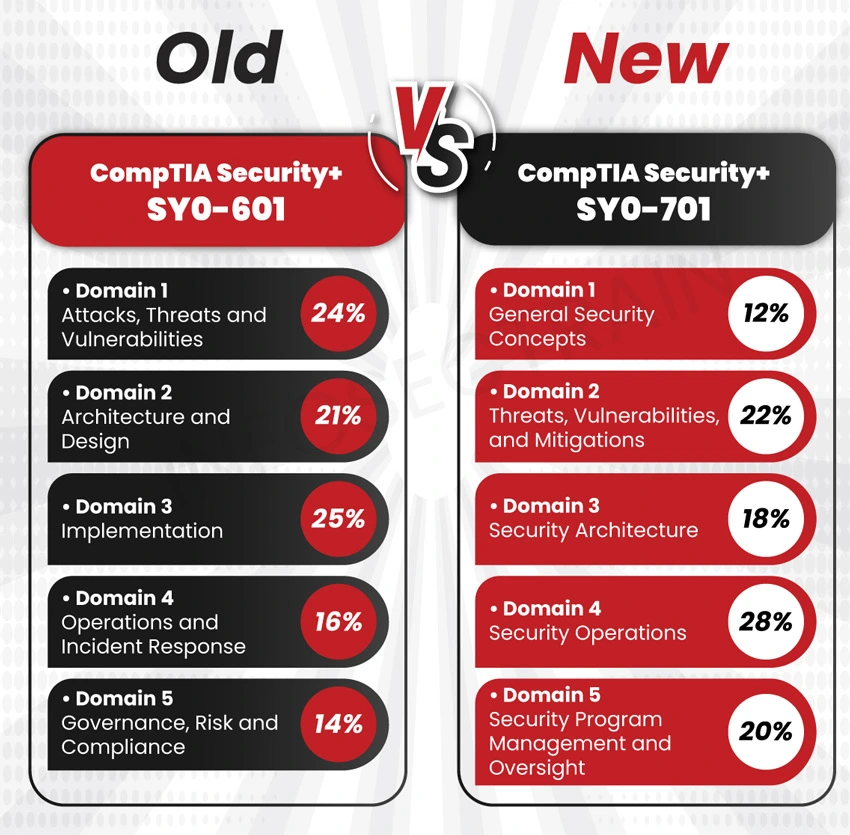








 The classes are good and clear. Provided very good resources.
The classes are good and clear. Provided very good resources.





 Certified & Experienced Instructors
Certified & Experienced Instructors Post Training Support
Post Training Support Customized Training
Customized Training Flexible Schedule
Flexible Schedule Access to Recorded Sessions
Access to Recorded Sessions 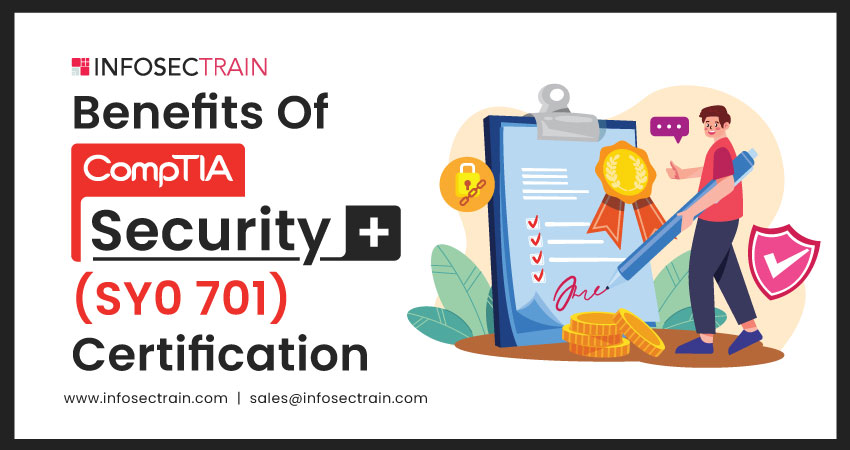
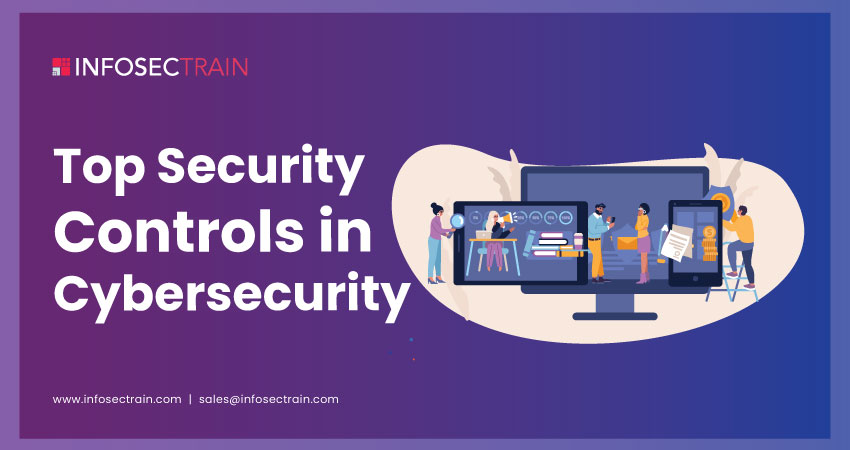
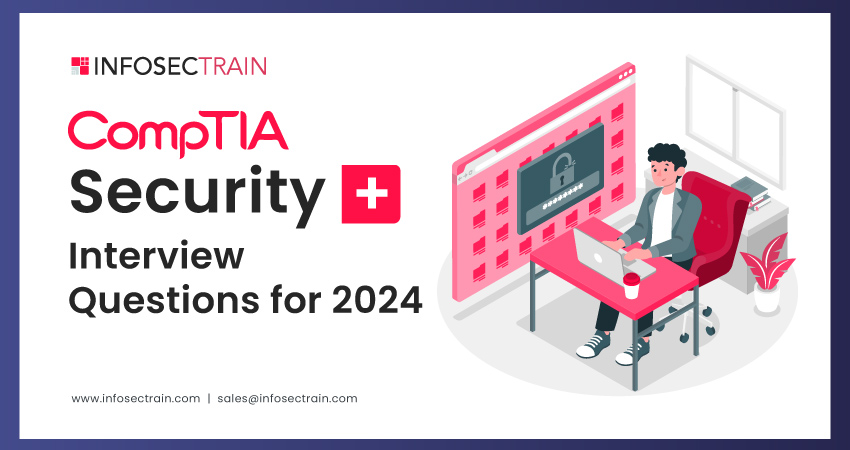
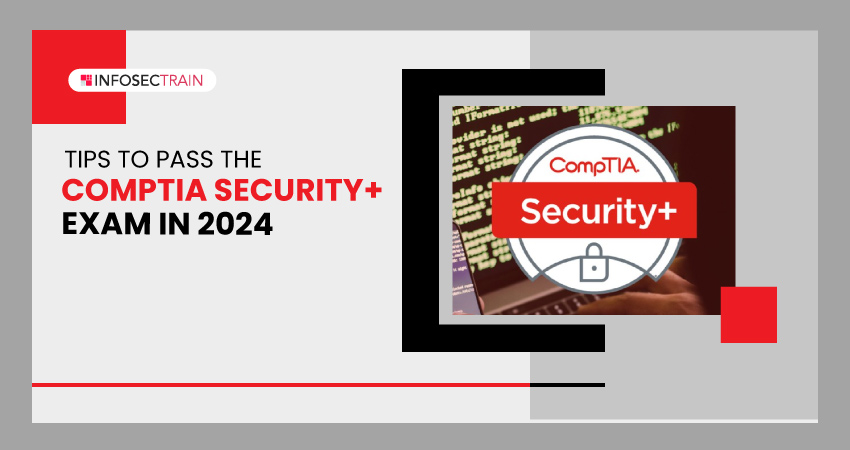
 1800-843-7890 (India)
1800-843-7890 (India) 
